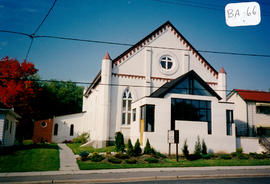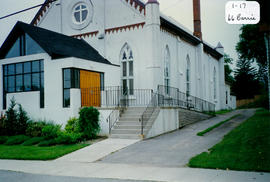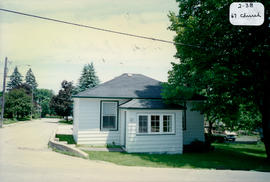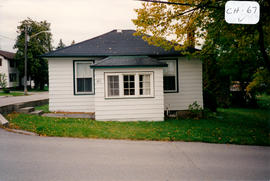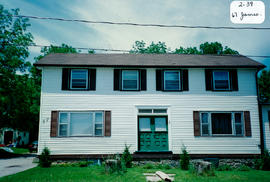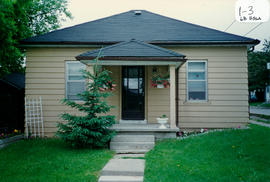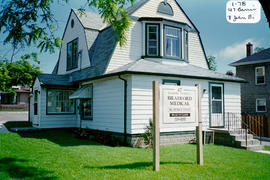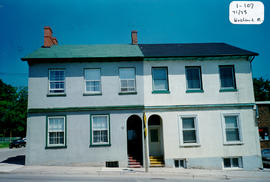65 Moore Street - The John Cook House
- CA BWGPL GJ-HB-2017-04-07-08
- Item
- 1995
Part of George Jackson fonds
The John Cook House is located mid-block on the east side at 65 Moore Street. It is set well back and was built around 1880 in the Gothic Revival style. The building was owned by the Cook family for many years. Originally, a series of sheds ran along the south side of Joseph Street from Moore Street almost to the houses on Barrie Street. These sheds were owned by John (Jack) Cook. He ran the local livery business and he was also a seed merchant. Fred (the son of Jack) lived in this house after his father’s death. Fred was an insurance agent, town politician, school board member, and a lay minister. The Fred C. Cook Elementary School in Bradford is named after him.
The 1½-storey, ‘L’-shaped building has large window openings with high floor to ceiling heights and a steeply-pitched, gable roof. There is an elegant, shallow-pitched, hip roof at the porch. It has elaborately-carved, wooden brackets at the support posts. There are (replacement) sash windows with wide, wood trim and projected, wooden hood moulding above the windows. The entrance door has the original transom and sidelight. Wood frame construction is clad with stained board and batten siding and the house has a stone foundation. The original cladding was stucco. According to the 2000 inventory, the house has been maintained well and it is pleasingly renovated. It also notes that although the shutters are not original, they are a tasteful (and not inappropriate) addition. (1, 2, 3)
George Jackson


